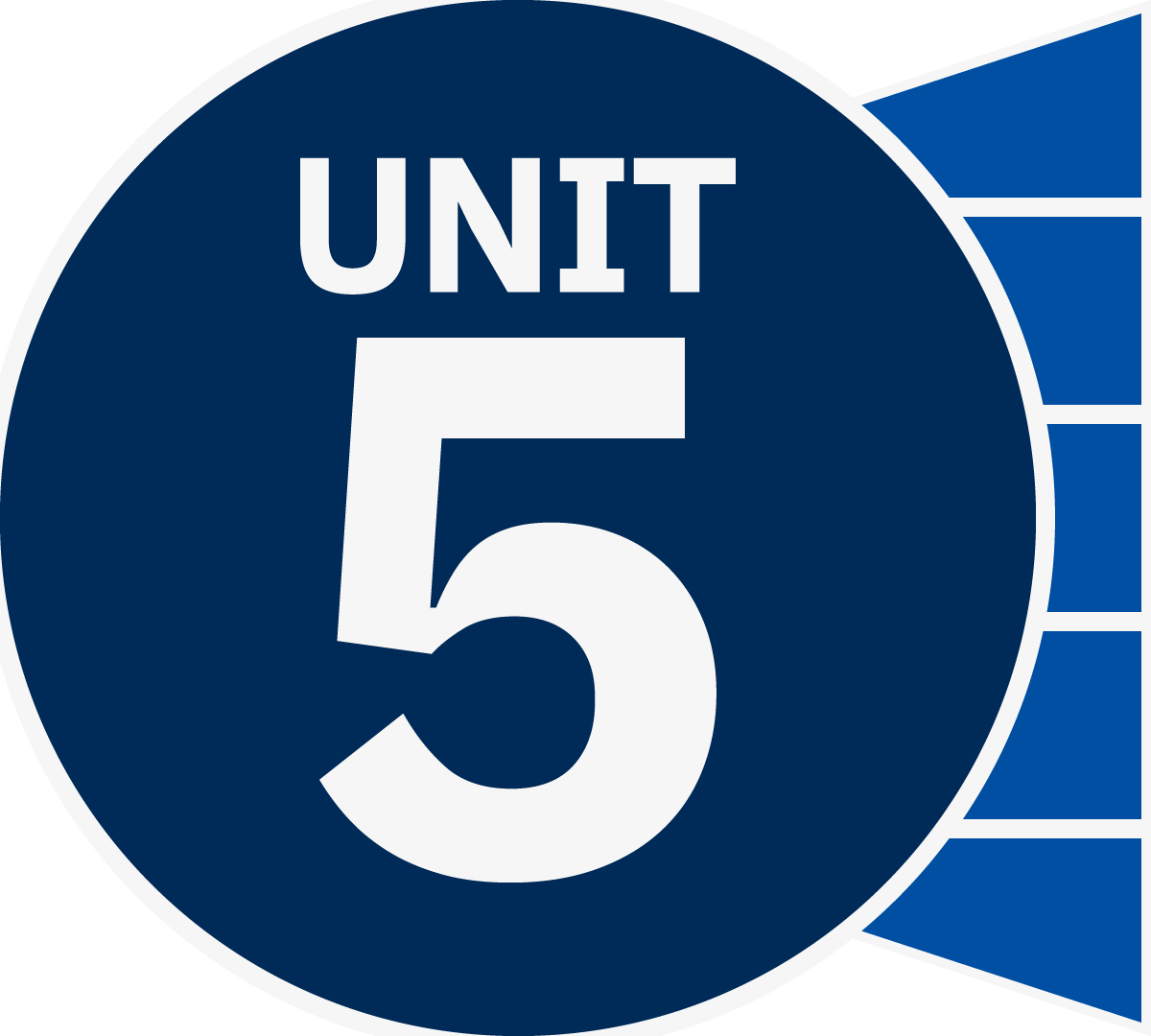Inquiry Companion: Unit 5
Unit 5 challenges students to trace the shifts in federal oversight as well as public opinion when it comes to civil liberties. Our Inquiry Companion Guide activities for Unit 5 facilitate student participation in inquiry-based civics learning for each strategy.
Students engage by considering the meaning of consent of the governed as well as explore primary source documents associated with landmark Fourth, Fifth and Sixth Amendment Supreme Court cases. They will explain the tension created by the intersection of Free Exercise Clause and the Establishment Clause by participating in a Paideia Seminar. Students then elaborate on their knowledge of the rights of the accused through a democratic experience simulation. Finally, students will evaluate their understanding of the Bill of Rights as they assess and defend each amendment.
Best practices for culturally responsive teaching weave through each activity.
Inquiry Guide Activity
- Unit 5: What Rights Does the Bill of Rights Protect?
- Unit 5: How Does the Constitution Protect Our Basic Rights?
- Active learning
- Awareness of political matters
- Collaboration
- Compromise
- Self-management
- Identify important factors of each of the amendments that are known collectively as the Bill of Rights.
- Explain the value of each amendment compared to the others.
- Defend the value of each amendment using a claim and reasoning.
- Do we still need all the amendments in the Bill of Rights?
- Bill of Rights Overview pre-cut into one strip per amendment
- Bill of Rights Battle Plan
- Bill of Rights Brackets – Digital
- Exit Ticket
- We the People: The Citizen & the Constitution textbook
- Bill of Rights The first 10 amendments to the Constitution. It lists basic rights of the people that the federal government may not interfere with and must protect.
- enumerated powers Those rights and responsibilities of the U.S. government specifically provided for and listed in the Constitution.
- establishment clause The part of the First Amendment that says the government cannot declare an official religion.
- free exercise clause The part of the First Amendment that says the government may not stop anyone from holding any religious beliefs they choose and may not unfairly or unreasonably limit anyone’s right to practice their religious beliefs.
- freedom of expression The right to make known one’s attitudes, emotions, thoughts, feelings, etc., as protected by the First Amendment.
- political rights All rights of a citizen in a free society that are clearly expressed and guaranteed by the Constitution and implied by natural laws.
The Bill of Rights refers to the first 10 amendments to the United States Constitution, although the Framers originally offered 12 amendments. These 10 amendments were ratified in 1791, two years after the Constitution was ratified in 1789. These amendments were added to address concerns raised by Anti-Federalists during the ratification process about the protection of individual rights and liberties.
The Bill of Rights outlines various fundamental freedoms of and protections for American citizens and have served as the cornerstone of American civil liberties, providing protection against government infringement and ensuring individual freedoms.
Additional resources for teacher background include:
- Freedom of Religion (Video)
- Freedom of Expression (Video)
- To Keep and Bear Arms (Video)
- My Home Is My Castle (Video)
- Due Process of Law (Video)
- Presumed Innocent (Video)
- The Right to a Fair Trial (Video)
- Cruel and Unusual (Video)
- Unlisted Rights (Video)
- States’ Rights (Video)
Prior to lesson delivery, teacher should pre-cut one strip per amendment from the Bill of Rights Overview to distribute during the lesson.
Teachers should preview all student materials and resources prior to the lesson.
- Welcome students to social studies.
- Conduct a quick poll asking students to indicate which is their favorite amendment in the Bill of Rights. Consider a chart with hashtags marked next to favorite amendments; this will illustrate which amendments are favored and which are not selected.
- Display the Bill of Rights Overview, if needed.
- After observing the breakdown of favorite amendment responses, introduce the inquiry question: “Do we still need all the amendments in the Bill of Rights?”
- Allow for a quick yes/no poll to see where students stand on the inquiry question.
- Allow students time to offer their own supporting questions.
- Using your routine strategy for setting up groups, divide the class into collaborative groups of approximately three to four student members.
- Cut the Bill of Rights Overview into strips and have student teams draw an amendment from the Bill of Rights.
- Distribute and review the Bill of Rights Battle Plan sheet so that students are aware of expectations.
- Provide students time to collaboratively complete their battle plan in order to answer their claim that their respective amendment is the most important amendment in the Bill of Rights.
- Encourage students to focus on their persuasive argument about why their amendment is more significant than their opponent’s using reasoning and evidence, and citing sources.
- Using a digital wheel or drawing from slips of paper, set your 10-bracket matchup as follows:
- Round 1 is all 10 amendments. This will yield five winners.
- Round 2 is the five winners from Round 1 plus teacher choice of those that did not win their battle. This will yield three winners.
- Round 3 is a battle between the three winners from Round 2. The final winner of this round will be the champion.
- While battles are happening, students should complete page 2 the Bill of Rights Battle Plan to ensure engagement and accountability.
- Matchup play (each battle) happens as follows:
- Team 1 and Team 2 will be determined with a coin flip by the teacher.
- Team 1 will have one minute to state why their amendment is best.
- Team 2 will have 30 seconds to respond to their statement.
- Team 2 will have one minute to state why their amendment is best.
- Team 1 will have 30 seconds to respond to Team 2’s statement.
- All five of the Round 1 matches should occur this way. Class votes on Round 1 winners.
- Winning teams move on in the bracket and get two minutes to prepare for Round 2. Add a teacher-chosen team to Round 2 to ensure even matchups.
- To keep all students engaged, you can have students that did not move on to individually choose a Round 2 team to join.
- Round 2 matchups will feature three battles. Students vote on battle winners.
- The final round will include a chance for each of the three teams to state their case. Students will vote on the champion!













